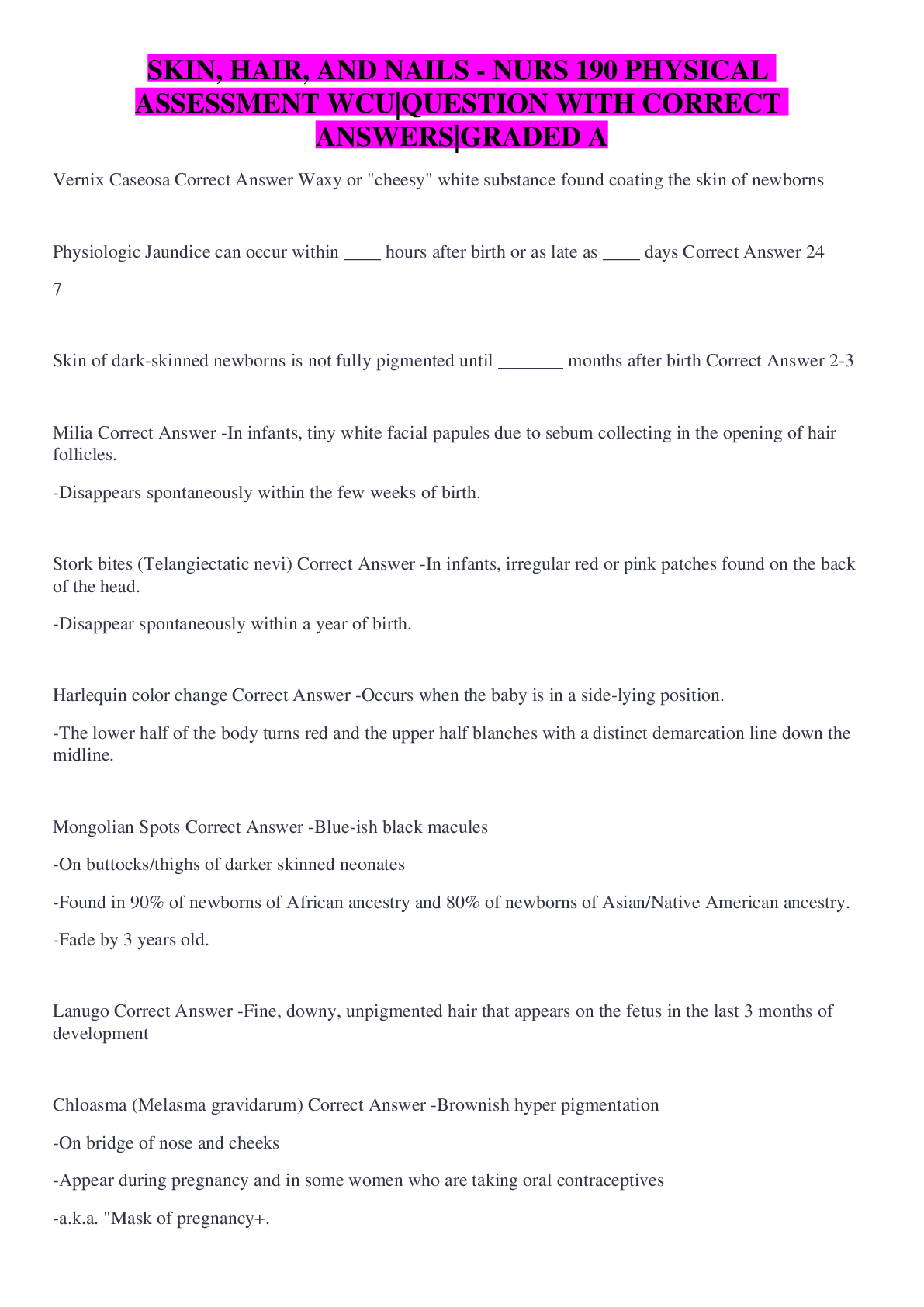*NURSING > QUESTIONS & ANSWERS > Ears, Nose, Mouth, and Throat - NURS 190 Physical Assessment With Complete Solution. (All)
Ears, Nose, Mouth, and Throat - NURS 190 Physical Assessment With Complete Solution.
Document Content and Description Below
To inspect auditory canal in infants, pull pinna ___ and back Correct Answer- down To inspect auditory canal in adults, pull pinna ____ and back Correct Answer- up Remove cerumen from auditory canal... with Correct Answer- cerumen spoon For auditory canal dryness, irrigate with bulb syringe of warmed solution of ____ and ____ followd by warm water Correct Answer- mineral oil hydrogen peroxide White patches on tympanic membrane can indicate Correct Answer- scar from prior infections Yellow or red tympanic membrane can indicate Correct Answer- infection Bulging tympanic membrane can indicae Correct Answer- increased pressure in middle ear Retracted membrane can indicate Correct Answer- vacuum in middle ear due to blocked Eustachian tube To perform whisper test Correct Answer- -Stand 1-2 feet away from client. -Instruct client to place one finger on tragus of left ear to obscure sound and stand to the right of the patient l. -Cover your mouth so they cannot read lips and whisper a simple phrase. -Ask the client to repeat the phrase back. -Repeat test for opposite ear -Client should be able to correctly repeat the phrase Air conduction Correct Answer- The transmission of sound through the tympanic membrane to the cochlea and auditory nerve Bone conduction Correct Answer- The conduction of sound to the inner ear through the bones of the skull Conductive hearing loss Correct Answer- Occurs when sound waves are prevented from passing from the air to the fluid-filled inner ear Examples: Infection, buildup of earwax, punctured eardrum, fluid in middle ear. Sensorineural hearing loss Correct Answer- -The most common form of hearing loss, also called nerve deafness -Caused by damage to the cochlea's receptor cells or to the auditory nerves Rinne Test Correct Answer- -Hearing test to evaluate loss of hearing in one ear. -Compares perception of sounds transmitted by air conduction to those transmitted by bone conduction through the mastoid. Performing the Rinne Test Correct Answer- 1. Strike tuning fork and place it on mastoid bone behind one ear. 2. Tell the patient to signal you when he/she can no longer hear the sound. 3. Move the tuning fork to the ear canal. 4. Tell the patient to signal you when he/she can no longer hear the sound. Interpreting the Rinne Test Correct Answer- -Air conduction time should be twice as long as bone conduction time (B/C 15, A/C 30). -If bone conduction is heard longer than air conduction, may indicate conductive hearing loss (B/C 15, A/C 10) [Show More]
Last updated: 2 years ago
Preview 1 out of 8 pages

Buy this document to get the full access instantly
Instant Download Access after purchase
Buy NowInstant download
We Accept:

Reviews( 0 )
$9.50
Can't find what you want? Try our AI powered Search
Document information
Connected school, study & course
About the document
Uploaded On
May 21, 2022
Number of pages
8
Written in
Additional information
This document has been written for:
Uploaded
May 21, 2022
Downloads
0
Views
116









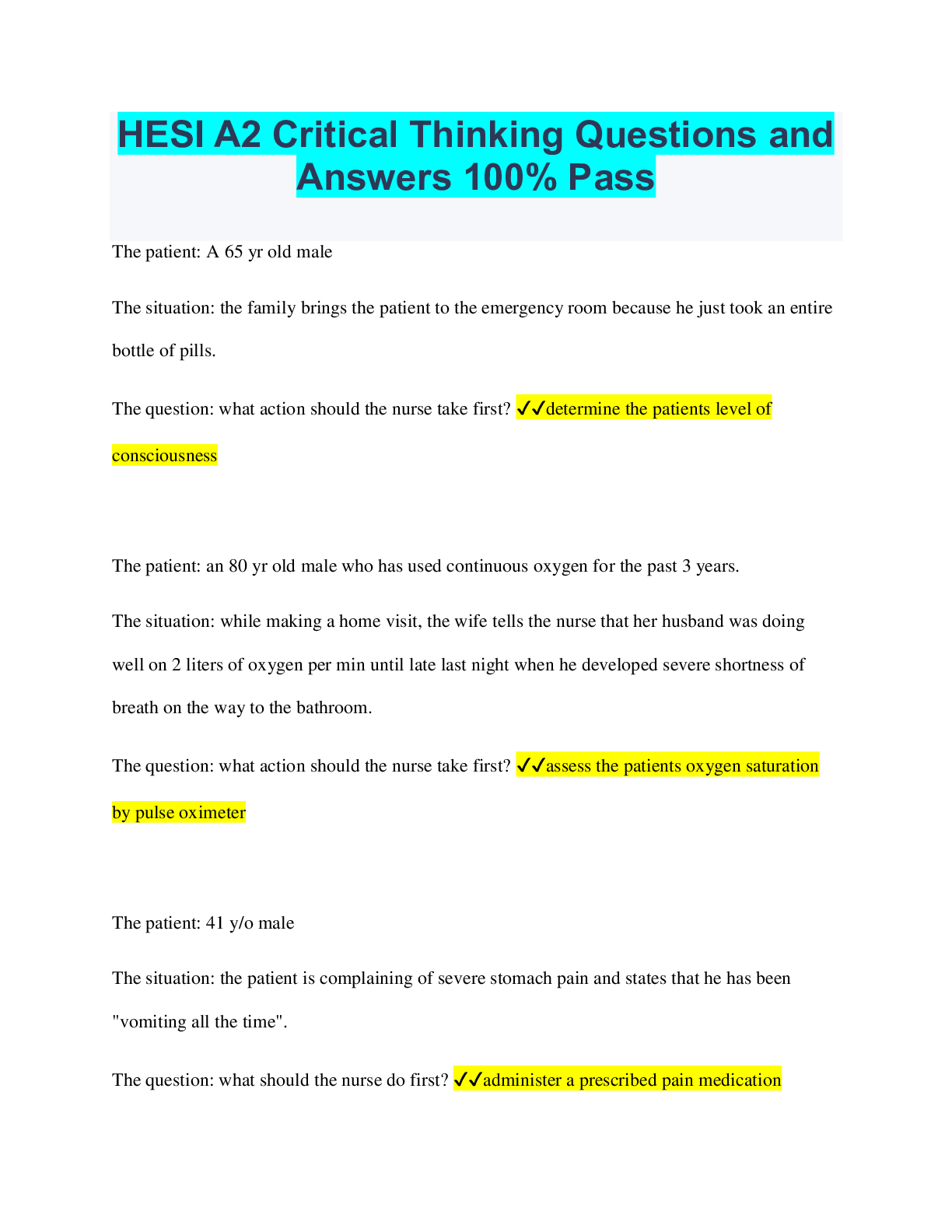
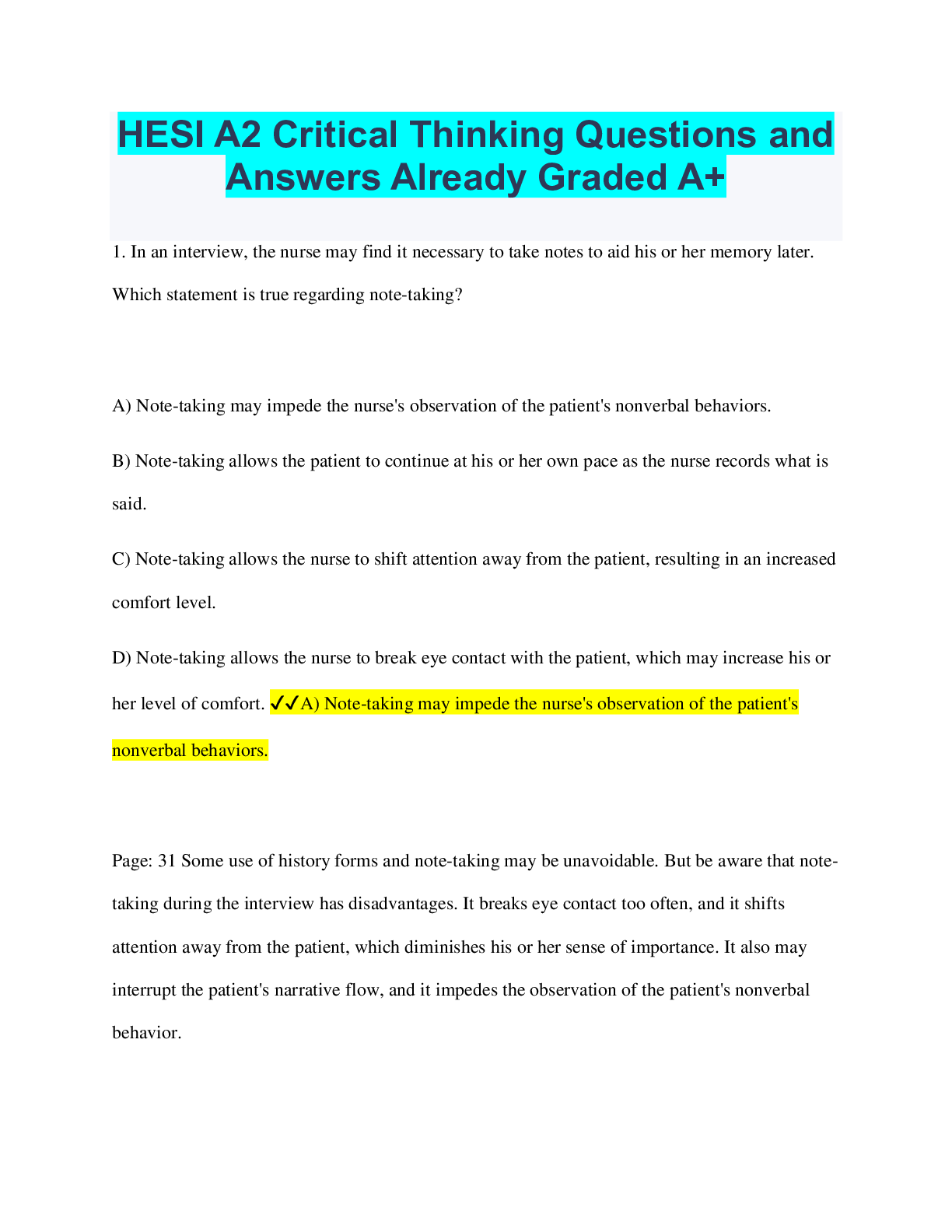
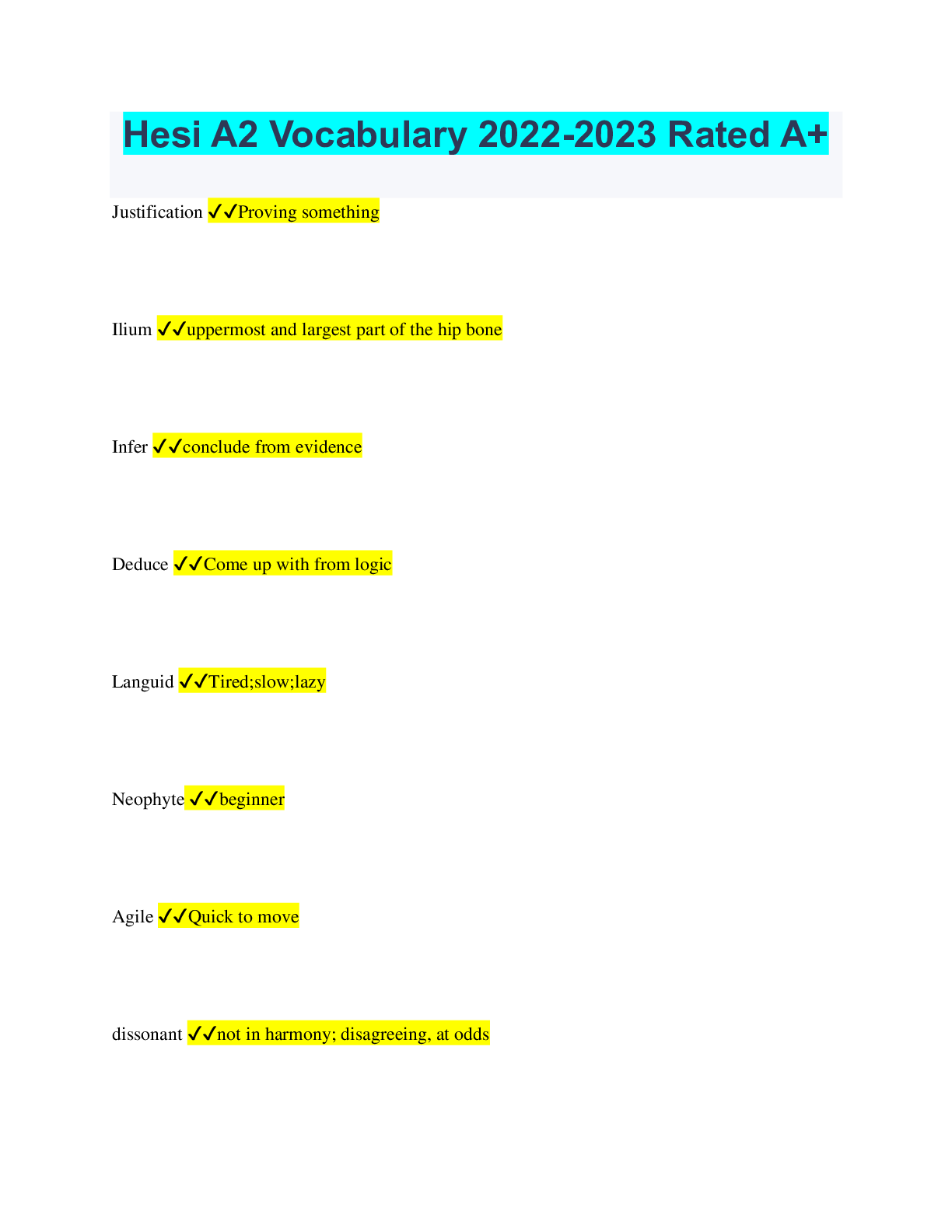

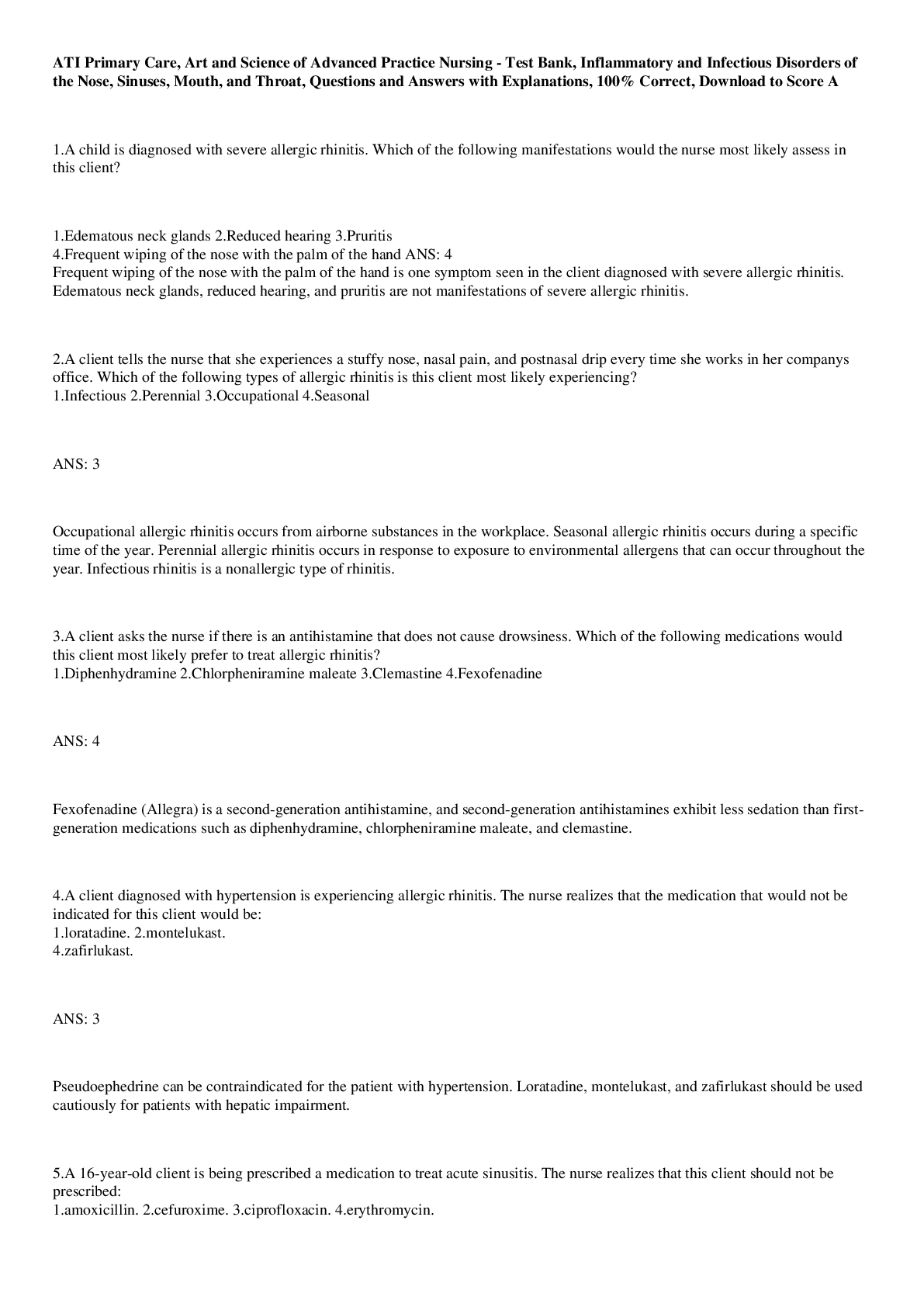





.png)
.png)
